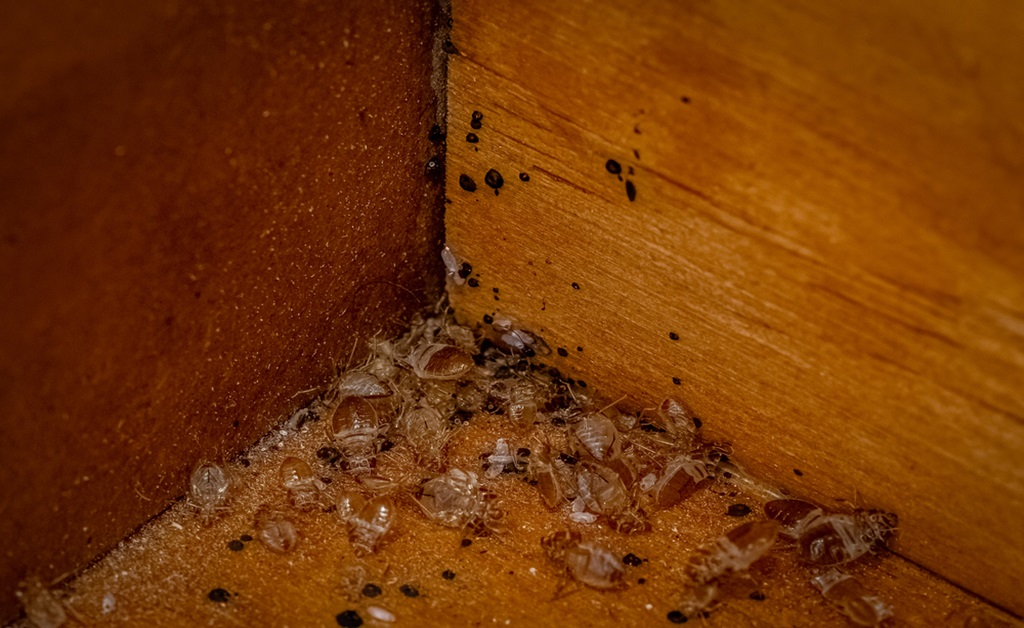Whether a persistent nightmare for homeowners or a thorny issue for property managers, bed bugs in furniture requires a pragmatic approach. More than common perception suggests, disposal of infested furniture emerges as a pivotal, yet overlooked step in the journey to a complete and sustainable solution. Let’s consider how to dispose of furniture with bed bugs or even how to dispose of a mattress with bed bugs.
The Underscored Environmental Impact of Bed Bug Infestations
Inhabiting our houses as unwanted guests, bed bugs present far more than mere annoyance; they pose a substantial challenge to our environment. Disposing infested furniture irresponsibly not only exacerbates the plague by transmitting it to new territories but also paves the way to landfill waste. We need to know how to dispose of bed bugs responsibly, both to confine the infestation and minimize the ecological footprint linked with waste management.
Spotting and Confirming Bed Bug Infestations
Before executing the eviction of potentially infested furniture, it becomes indispensable to detect and confirm the presence of bed bugs.
Visual Inspection:
Engage in a detailed scrutiny of crevices and seams in mattresses and furniture – the chosen hideouts of bed bugs. Search for tiny, reddish-brown creatures commensurate with an apple seed.
Markers of Infestation:
Get on the lookout for rusty or reddish stains on bed sheets or mattresses, residues of crushed bed bugs. Tiny dark spots, a telltale sign of their excrement, may bleed on the fabric similar to a marker. Additionally, scan for mini (approximately 1mm), pale yellow eggs, and shed skins of growing nymphs.
Professional Validation:
In case of uncertainty, get a pest control expert such as Brock 360 Pest Solutions on board for a sure-shot confirmation.
Professional Services vs DIY Endeavors
Upon validation of infestation, the dilemma between professional services and DIY solutions hinges on multiple factors, encompassing the extent of infestation and comfortability with pesticide deployment.
Professional Services:
Armed with expertise and specialized equipment, pest control professionals offer comprehensive treatments, often unachievable through DIY methods. Many even offer guarantees, assuring the resolution of the issue. This is true whether it’s bed bugs in a couch, chair, sofa, or anything else.
DIY Solutions:
Particularly for minor infestations, DIY strategies prove more cost-efficient. Bed bug repellants, traps, and mattress covers are easy to find. However, they demand copious amounts of time and effort, including meticulous cleaning, washing bedding at high temperatures, and routine inspections.
Adopting Responsible Disposal Methods
On the brink of infested furniture disposal, ensure you undertake the process responsibly.
Clear Identification:
Unambiguously label the furniture as ‘Bed Bug Infested‘ to avert others from unintentionally spreading the infestation.
Wrap and Seal:
Envelop the furniture in sturdy plastic and seal it intact with tape to contain the bed bugs during transit.
Local Waste Management Contact:
Reach out to your local waste management service for specific guidelines on infested item disposal.
Curbside Disposal Avoidance:
Refrain from placing infested furniture on the curb for regular trash collection unless guided by the local authorities.
Can new furniture have bed bugs? The chances are incredibly low since new furniture has typically only been in the factory.
Addressing bed bug-infested furniture demands a judicious strategy to reduce environmental impact and prevent further dispersal. By precisely identifying infestations, weighing between professional and DIY solutions, and employing correct disposal methods, homeowners and property managers can efficaciously tackle this formidable issue. For more insights and professional assistance, do contact pest control experts committed to ensuring a bed bug-free ambiance.

